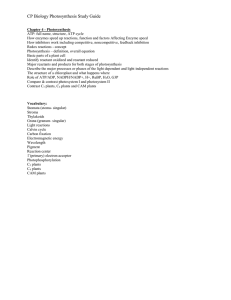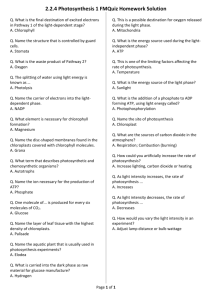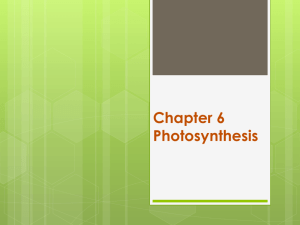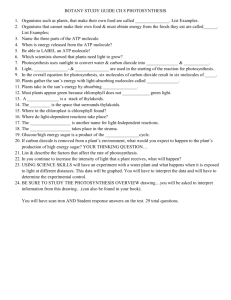Photosynthesis
advertisement
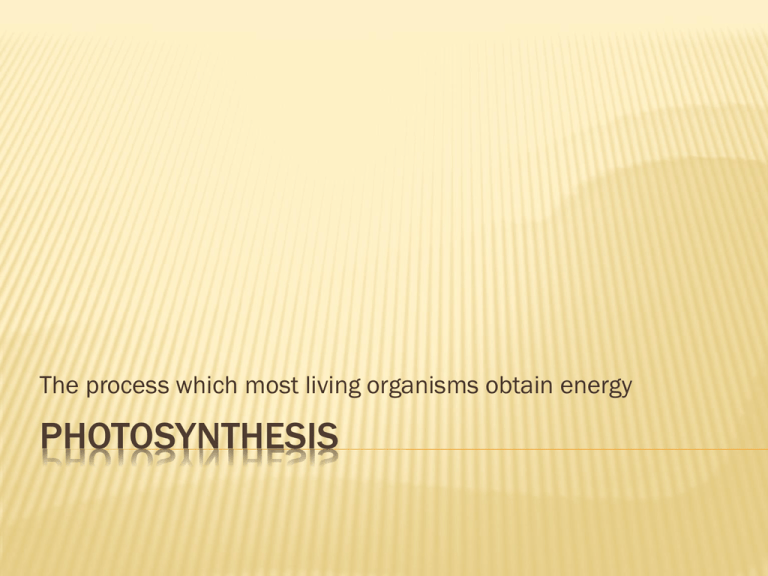
The process which most living organisms obtain energy PHOTOSYNTHESIS QUESTIONS TO ANSWER 1. What are the chemical reactants in photosynthesis? 2. Write the equation for photosynthesis. 3. What is the function of chlorophyll? 4. Describe the difference between the two photosystems. 5. What are the end products of the light dependent reaction? 6. What are the end products of the light independent reaction? 7. What is ATP and why is it important? 8. Where does photosynthesis occur? 9. Describe what happens in the 3 main stages of photosynthesis. 10. What type of plants are C4 plants? CAM Plants? BIOCHEMICAL PATHWAYS Series of chemical reactions where products are the reactants in the next step C6H12O6 + 6O2 → 6CO2 + 6H2O + Energy WHERE? WHERE DOES ENERGY COME FROM? Autotrophs make their own food from photosynthesis Heterotrophs consume other heterotrophs or autotrophs: ultimately the energy comes from cellular respiration (opposite chemical reaction of photosynthesis) OVERVIEW OF PHOTOSYNTHESIS LIGHT REACTIONS Occur in chloroplasts White light hits, absorbs red light and chlorophyll b soaks up purple, blue and some of the orange light. Green light is reflected so that’s what we see. Chlorophyll a is the main player Chlorophyll b and carotenoids are accessory pigments which allow more light to be used. PHOTOSYSTEMS Next the light energy is converted to chemical energy through Photosystem I and Photosystem II. GLOSSARY NADP: nicotinamide adenine dinucleotide phosphate RuBP: ribulose biphosphate G3P: glyceraldehyde -3- phosphate PHOTOSYSTEM II Light has enters and excites the electrons, they leave the chlorophyll a to enter the “primary electron acceptor” The primary e- acceptor moves electrons and this loss of energy will push protons into the thylakoid. CHEMIOSMOSIS the buildup of protons from the thylakoid space (from ETC of PII) gives us potential energy, ATP synthase (enzyme) adds a phosphate group (P) to ADP to make ATP NADPH and ATP fuel the next part: The Calvin Cycle THE CALVIN CYCLE Carbon fixation, where a 3-carbon sugar is produced from CO2, occurs in stroma. See p120 ALTERNATIVE PATHS TO CARBON FIXATION C4 pathway- allow carbon dioxide to be fixed into four carbon sugars CAM pathway- some plants are dedicated CAM plants and others can shift if environment is unsuitable for other pathways. DISCUSS… Could plants live without animals? Could animals live without plants? Why or Why not? What causes leaves to change different colors in the fall? What are the two stages of photosynthesis? What happens in them and where?
